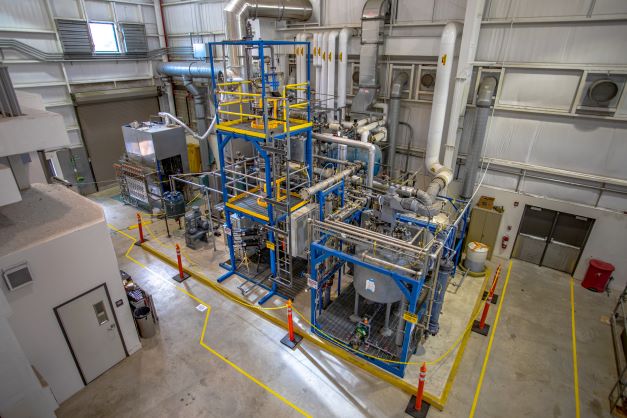Market Data
March 17, 2023
CarbonFree CEO Talks USS Partnership
Written by Becca Moczygemba
Martin Keighley, CEO of CarbonFree Chemical Holdings, recently spoke with SMU to discuss his company’s SkyCycle carbon capture and storage (CCS) and carbon capture and utilization (CCU) technology. As previously reported, US Steel has entered into a preliminary agreement with CarbonFree to address the capture of CO2 at its Gary Works facility in Indiana.
 SkyCycle, CarbonFree’s second-generation technology, is a full-service CCS and CCU, Keighley said.
SkyCycle, CarbonFree’s second-generation technology, is a full-service CCS and CCU, Keighley said.
“SkyCycle converts captured carbon into carbon-negative chemicals – such as precipitated calcium carbonate and hydrochloric acid – that can be sold wholesale or stored safely underground. By selling into the wholesale market, the chemicals created through SkyCycle’s mineralization process help drive profitability as well as decarbonize the supply chain for a number of materials including paper, plastics, ceramics and more,” said Keighley.
He added that the technology essentially makes synthetic limestone calcium carbonate at the mill site. “Once you’ve made limestone, it isn’t going to decompose, it isn’t going to go anywhere, so you can store it locally on the Gary (Works) site or ship it locally, put it into landfills or limestone quarries. It’s a very stable, non-hazardous, inert chemical.”
When asked about the obstacles around implementing a new technology like this, Keighley takes it all in stride. “Skymine was our first-generation technology and SkyCycle is second generation. It’s always challenging with a lot of first-time technologies. But we’ve put a lot of effort into de-risking it, working with Fluor who introduced us to US Steel. Our technology is relatively simple, and we have over 90 patents,” he said. The first installation is at a commercial scale plant rather than a pilot plant. He noted that it will be a profitable operation and provide returns for investors.
An additional cost benefit for companies like US steel is, CarbonFree invests the money in building the plant out. Keighley noted that it’s a significant hurdle that’s removed from the decision to move forward with a technology like this. With US Steel’s main commitment being net zero emissions, this will start to move them down that road. In turn, it provides longevity to the blast furnaces and the jobs that are required to run them, Keighley added.
Recently there was a roundtable discussion at White House. US Steel CEO David B. Burritt introduced this project as a demonstration of the company’s commitment to decarbonization.
While this is the first project announcement, other opportunities are being planned both domestically and globally.
By Becca Moczygemba, becca@steelmarketupdate.







